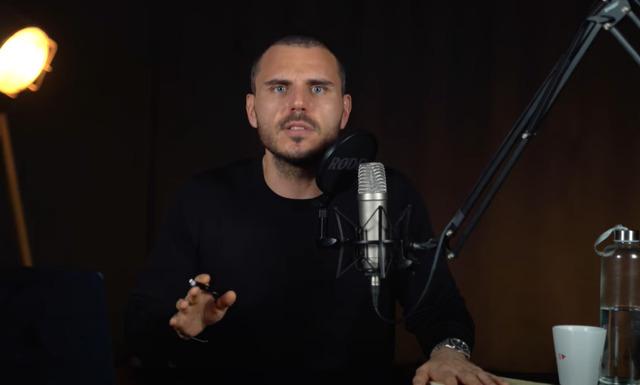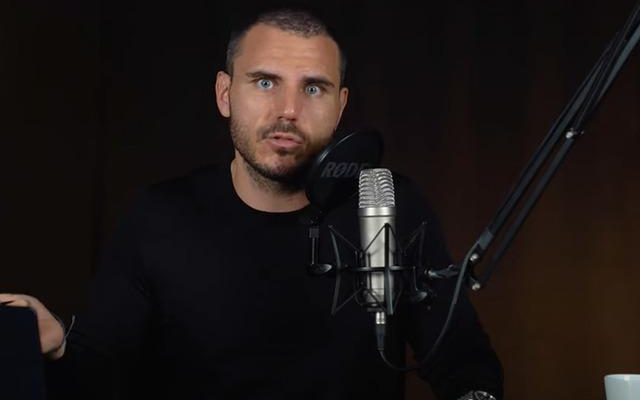Alican Elkorek, who made a name for himself with his broadcasts on the “Human Conditions” channel on YouTube, explained in this episode of his podcast how we can manage our brains and improve our brains by using our balance.
Prepared by ‘Managing our brain with balance?’ In his video titled “We will discover how we can trigger neurological changes by moving, using our balance and learning from mistakes. In this video, you will learn in detail how you can shape these scientific tools, tactics and mechanisms according to your personal goals.”
Elkorek said that, as humans, we can transform the structure of our nervous system and our brain through various conscious methods and focusing practices, and in his video, ‘Does our brain control our behavior?’ He also looked for an answer to his question.
Elkorek shared the following information about the answer to this question;
“You probably said yes to this. Let’s keep this answer in our pocket. Well, let’s ask the second bombshell question; Have you ever heard of something called “Muscle Memory”? Actually, there is no such thing. Our muscles do not have a memory, we can say that they are quite unconscious. However, what has a memory knows “Neurons have memory. In other words, the way we walk unconsciously or talk on the phone does not come from our muscle memory, but from our neuron memory.”
So, could it be that sometimes our behavior in life controls our brain?
Just as moving, doing sports and exercising muscles are important for body and heart health, they are also important for brain health. And we can say that it is the key to change. Does our brain control our behavior? Yes, we said. Well, we asked the exact opposite; Can our behaviors, that is, our actions, control our brain? A short answer: YES.
Let’s talk about what behaviors we need to exhibit to ensure the transformation in our brain; You may or may not be a professional athlete, you may or may not be a professional dancer, you may be someone who goes to the gym every day or lifts weights or jogs on the beach, or you may be neither of these. However, we can open the doors of neuroplasticity by using our actions, that is, by moving. By the way, it is worth noting that the best method for this is resistance exercises, that is, weight exercises. This is extremely critical not only for the body, but also for the brain. Movement is just one of multiple keys to neuroplastic development.
MAKING MISTAKES IS ACTUALLY VERY USEFUL FOR LEARNING
One of the sources of creating plasticity is making mistakes. Seeing mistakes and giving our brain the opportunity to correct it by giving the message that there is a mistake. We have neurons that perform this correction and sweet little synapses that provide the connection between them. Making repeated mistakes, correcting them and trying again opens the doors of neuroplasticity. Big mistakes can initiate big changes. In this process, I share how chemical cocktails such as epinephrine, acetylcholine and dopamine work in which situations, in other parts of this series; Definitely check them out too.
Being under or over 25 years of age
Brain plasticity between the ages of 0-25 is incredibly powerful. However, if you are not in this age range, don’t worry, you are still lucky. Neuroplasticity is possible at any age, although it may require a little more focused action. If you are under 25 and wondering what is most beneficial for your brain development, scientists recommend that you receive comprehensive training; namely mathematics, chemistry, physics, literature, music, instruments, new languages, new books, various sports and practicing self-awareness and meditation for emotional development. So, learning a lot of information in many areas increases your neuron count. If you are over 25, you must learn to use the ability to focus and correctly apply different neuroplastic development tools to learn faster and more effectively.

Now, let’s continue where we left off.
We said that one of the most important functions that trigger neuroplasticity is making mistakes and trying to correct them. For example, let’s say we are playing the piano. Unless we have superior talent, we cannot play the melodies we learn perfectly the first time. As our fingers and ears get used to it, and as we try and make mistakes, the central nervous system makes the following comment: “We need to learn this and fix it.” So, as our brains swim in a pool of epinephrine, acetylcholine, and dopamine, neuroplasticity begins to come to life. Let’s never get bored of making mistakes, let’s even approach them in a positive way, give time, make space, and you will see that your mistakes will enable you to realize the habit, skill or subject you want to learn very well.
Motivating Our Brain
For a solid neuroplastic development, that is, for permanent and rapid learning, we need to convince our brain how critical this issue is for us. Constantly giving logical reminders about how critical the subject we need to learn is for us is of great benefit in hacking our brains.
In summary, the main scientific rules of permanent learning are:
- Stimulating the autonomic nervous system and increasing the ability to focus.
- Continuing without fear of making mistakes triggers neuroplasticity.
- Balance and movement start the process by connecting the body and brain.
- Focusing on the right target, solving the cause-effect relationship and constantly remembering it.
My aim in this section was to convey to you the neurological knowledge base regarding permanent learning and working. In addition, we are equipped with applicable tactics that you can integrate into your daily life.
[ YOUTUBE’DAKİ “DENGE İLE BEYNİMİZİ YÖNETMEK Mİ?” VİDEOSUNU İZLEMEK İÇİN TIKLAYIN])

